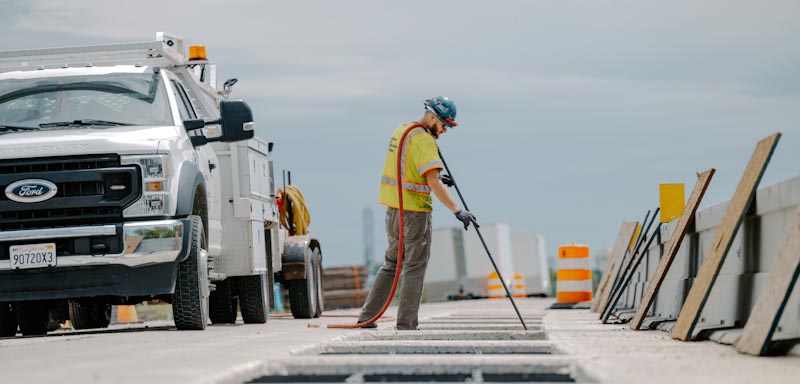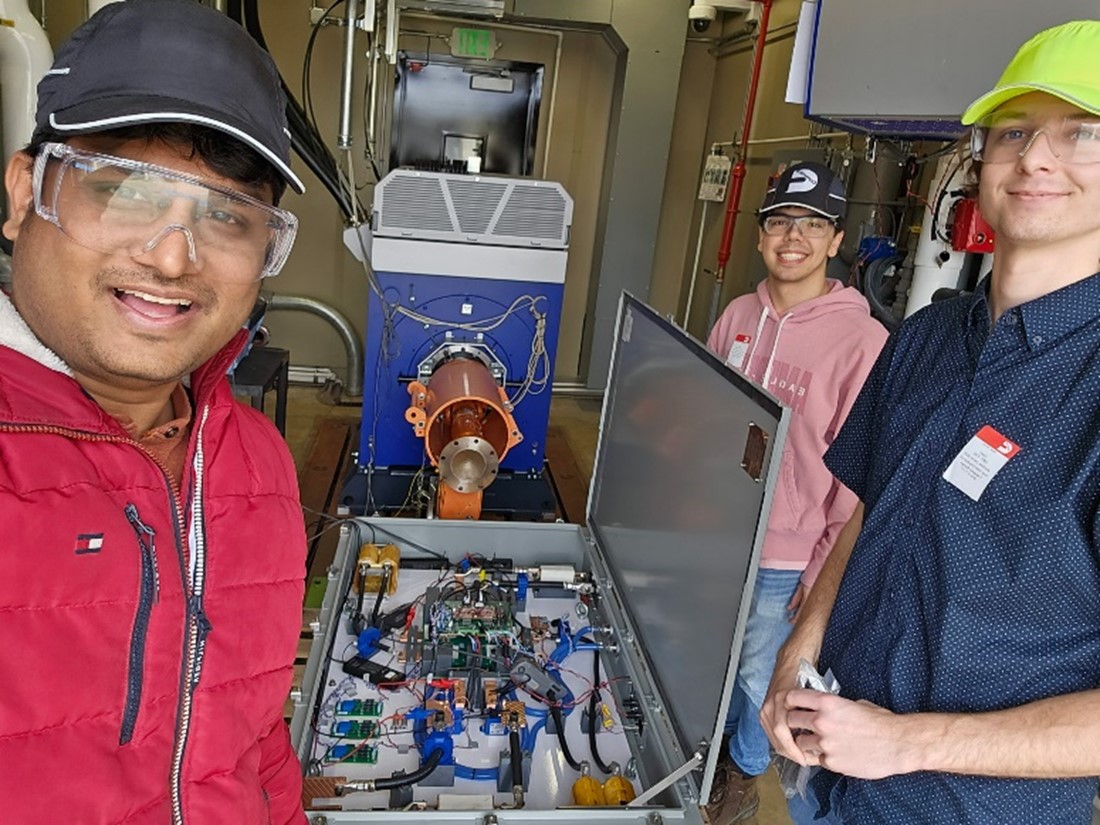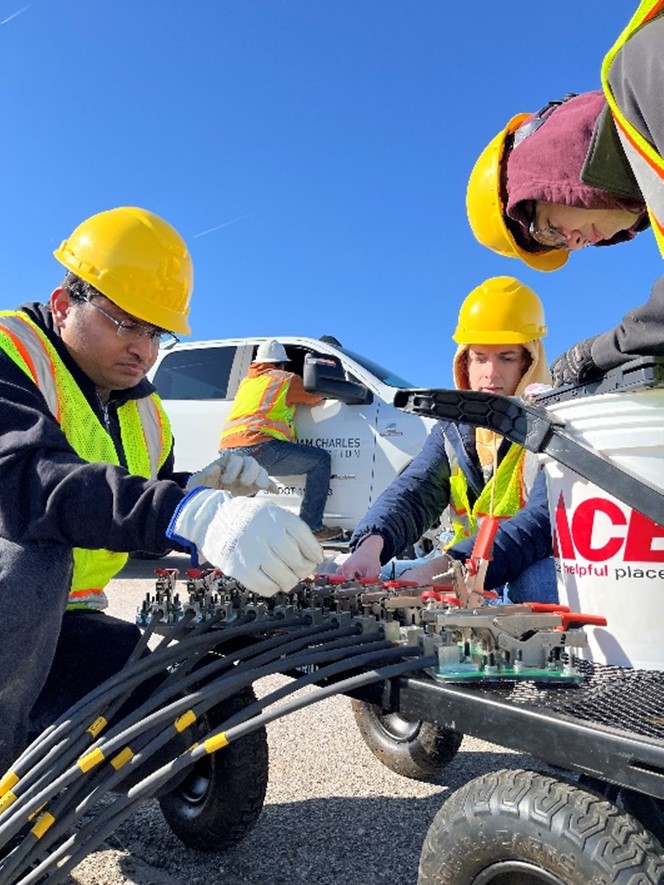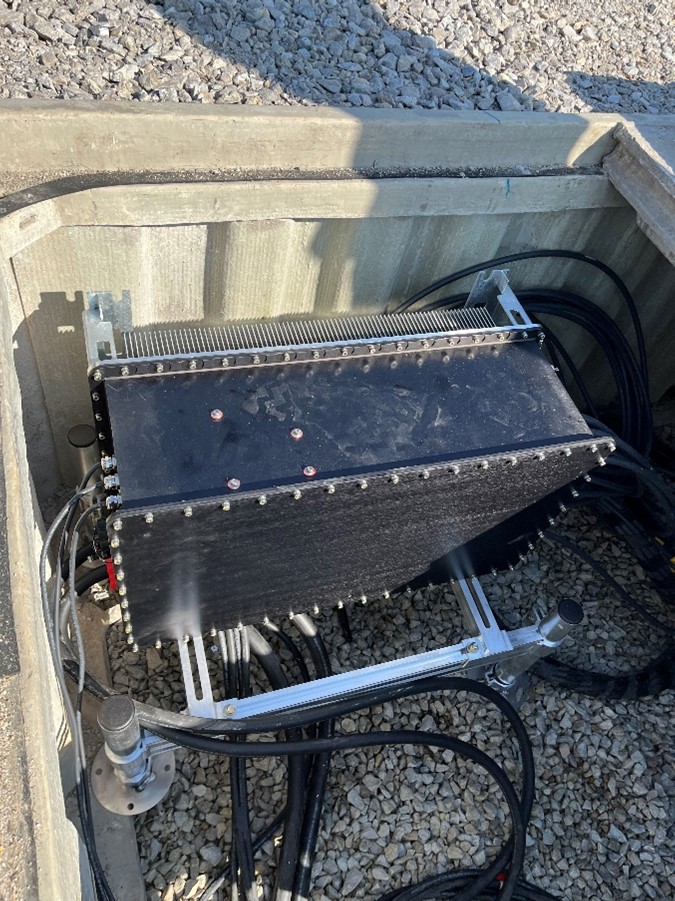April ’25 Indiana Pilot Updates

Photo Courtesy: Kelsey Lefever Purdue University
Highlights:
Update on Purdue/INDOT Pilot Project
Vehicle Assembly and Test: Over the last quarter, the Purdue research team has continued the development of key components of the receiver system that will be installed on the Cummins vehicle in Spring 2025. ASPIRE faculty/students are responsible for developing the dynamic power transfer (DWPT) receiver and its corresponding power conditioning circuitry. The power conditioning circuitry must interface with the existing battery pack/management system on the Cummins vehicle.

Figure 1. Figure 1: Key components of retrofitted Cummins Class 8 semi-truck.
The ASPIRE/Cummins team has met biweekly over the fall of 2024 to finalize the design and the vehicle integration. The power conditioning circuit design was completed and fabricated toward the end of 2024 and was tested in Purdue’s Vehicle Systems Laboratory. It is presently being tested at Cummins in Columbus, IN. The circuit has its own controller to regulate the power being sent from the roadway to the vehicle. ASPIRE/Cummins have developed the communication interface between the Cummins System Control Module (SCM) and the converter control unit. A picture of the students with their converter at the Cummins laboratory is shown below.

Figure 2. ASPIRE students Vatan Mehar (left), Nick Frooninckx (center), and Isaac Abram (right) testing their 200-kW bi-directional DC-DC converter at Cummins in Columbus, IN.
Roadway Testings and Inverter Installation
These same students have been active at the INDOT DWPT roadway as well. Shown below are the students testing the ASPIRE 3-phase rectangular coils prior to installation of the inverters. Post-winter testing of the coils was completed in early March in preparation for the installation of the inverters, which will take place in late March. The testing has shown the coils have maintained their specified impedance through installation, concrete overlay pouring, and a winter full of many freeze/thaw cycles. One notes the 200-kW inverters are air-cooled (note the heatsink connected the inverter enclosure). As the INDOT pilot is being installed on a roadway adjacent to a wetland, the inverters have been rated to international IP 68 standards, meaning they can withstand extended immersion in water.

Figure 3. ASPIRE students Vatan Mehar (left), Isaac Abram (center), and Nick Frooninckx (right), testing transmitter coils at the INDOT DWPT pilot.

Figure 4. Inverter being placed in a vault at the roadway shoulder.